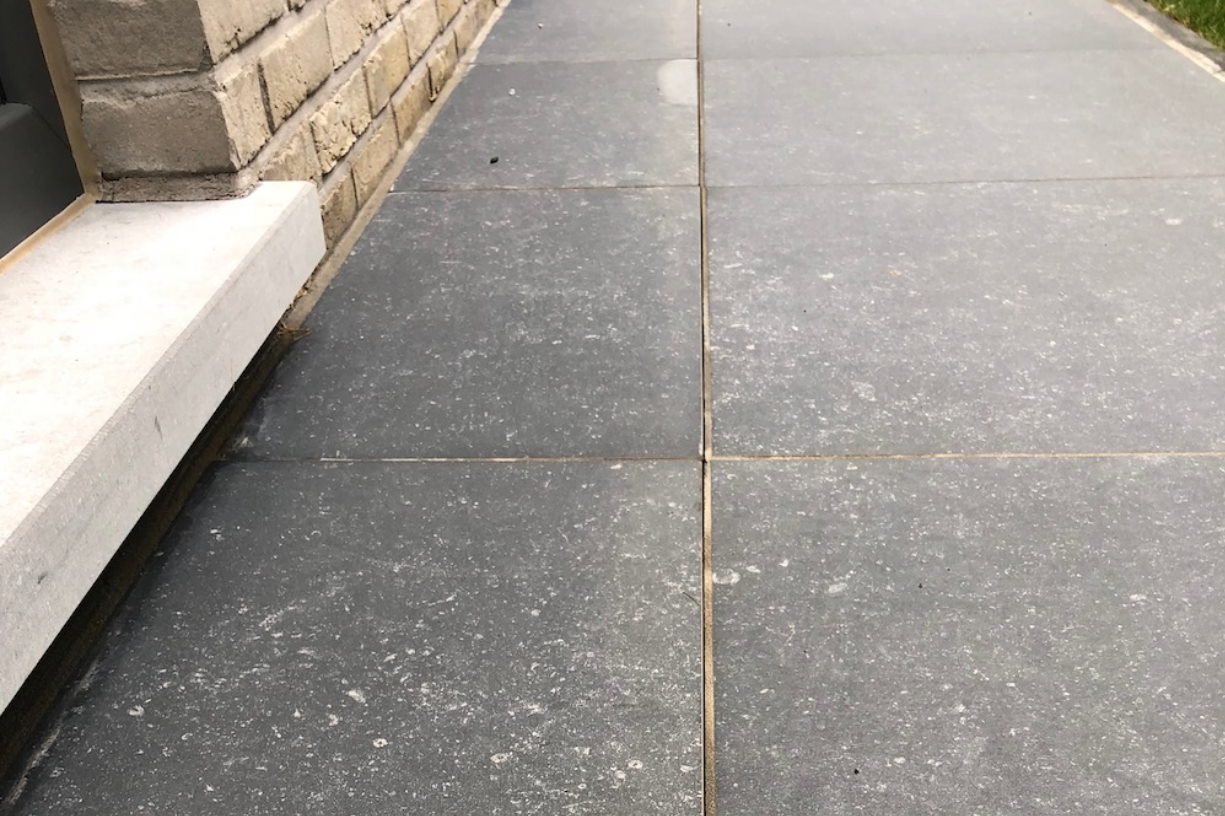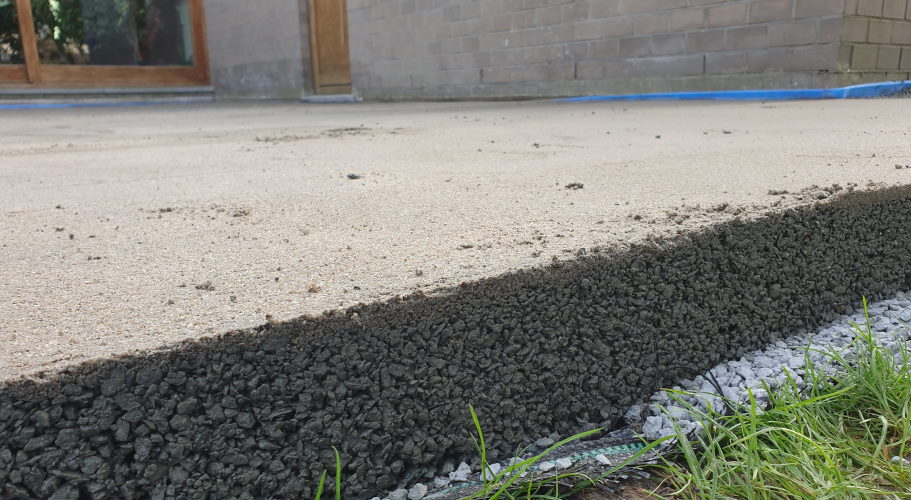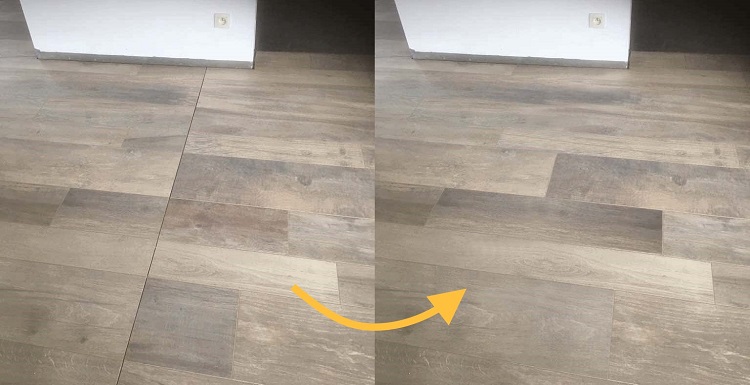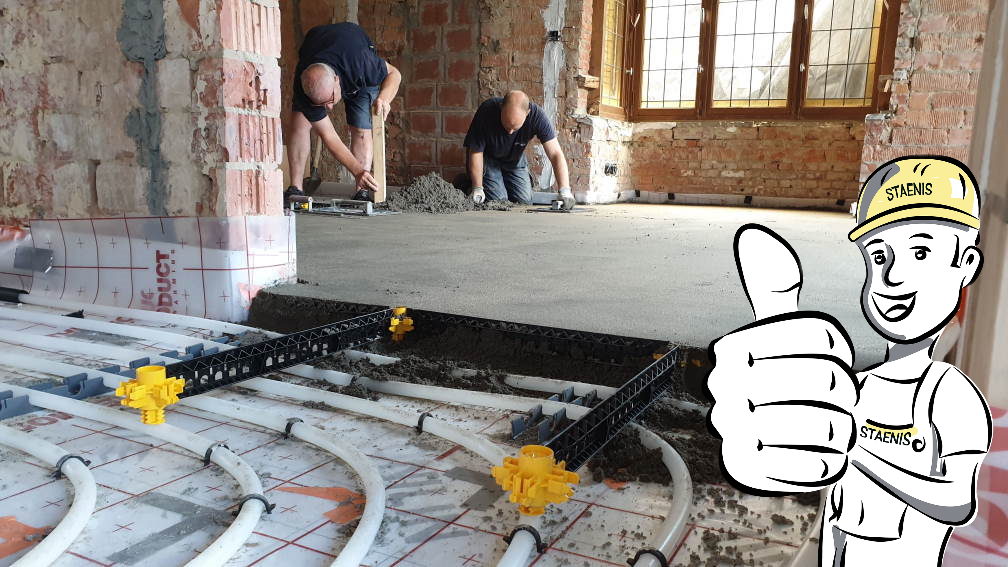Draining terrace floor structures
Current problems

If a terrace needs to be renovated, you always encounter the same damage. Loose joints, loose tiles, ... and when you remove the tiles, there is no screed or stabilised sand underneath, but rather sand or soil. First, the joints crumble due to the stresses in the screed and the temperature fluctuations of the tiles. This allows moisture to seep into the joints, causing the cement in the screed to erode and leaving only sand behind. As the subfloor becomes weaker, the tile eventually comes loose from the screed. Staenis solves these problems by combining the StaenisGrid with drainage mortar, ensuring your terrace is not affected by stresses and moisture.
Solution = StaenisGrid
Compartmentalization of the screed = stress-free screed


In the tables above, you can read the vertical displacement in relation to the number of days after the screed has been laid (with 250 kg cement/m³). Here you can see that a traditional screed floor with reinforcement mesh or fibers can become up to 5 mm uneven at the corners, while with the StaenisGrid all values are 10 times lower and thus no warping/cupping/bulging of the screed occurs. As a result, floor coverings can be installed more quickly, easily, and without risk.
Replaces the steel reinforcement mesh = saving an average of 3 euros/m²

The StaenisGrid divides the screed in such a way that the stresses are greatly reduced.
No or very few remaining stresses = no shrinkage damage and subsidence after a few years.
Replaces a drainage mat = average saving of 25 euros/m²

The StaenisGrid divides the draining screed into areas of 0.5 x 0.5 m. As a result, the dish-shaped effect is distributed and manifests minimally per compartment. The stress-free substrate in combination with the draining drainage mortar ensures that a drainage mat (+ possible adhesion) averaging €25/m² becomes unnecessary. For an area of 50 m², this can quickly result in a saving of €1250.00.
No expansion joints required in the screed = saving an average of 3 euros/LM

A traditional terrace screed is always divided by an expansion joint every 4 meters on average. Because the StaenisGrid provides an expansion joint every half meter, it is unnecessary to install a real expansion joint, either in the screed or in the tiles. This results in a beautiful and aesthetic end result. However, keep in mind that an expansion joint still needs to be installed at openings smaller than 110 cm.
Calculate the quantities and visit our webshop.

All products/items related to floor constructions can be found on this webshop.
- Such as screed, stabilized sand, and drainage mortar supplied in a silo
- (tileable) insulation screed supplied in bags
- Recycled aerated concrete granules supplied in bags.
- As well as the installation materials to level these, such as the StaenisGrid, float, and screed iron.







